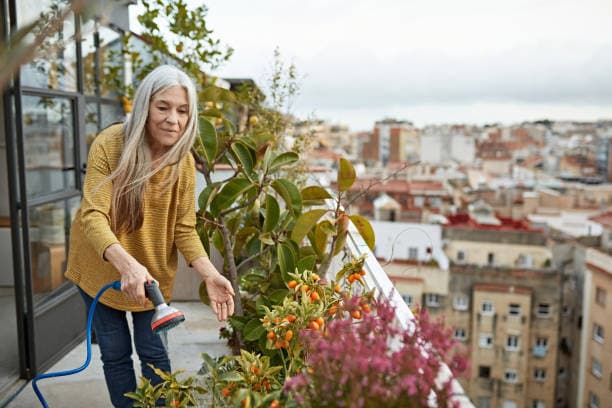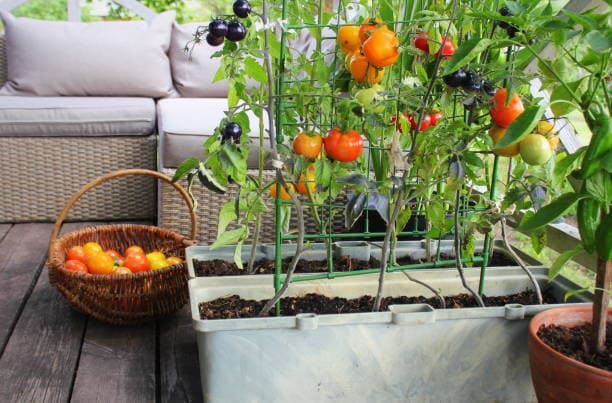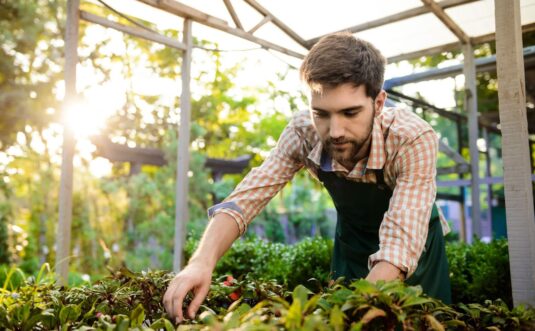It is a wonderful way to green up your home and a great way for city dwellers to feel connected to nature. Flat gardening is a wonderful way to green up your home. It is possible to successfully manage indoor gardening in a variety of ways, despite the fact that city life presents a number of challenges, including limited space.
Using Storage Containers
One of the keys to successful indoor gardening is the organisation of space. Three types of containers are recommended:
- A large container for garden supplies: It is convenient for storing fertilisers, pest control products, pots and other gardening supplies. It saves space and keeps things tidy.
- Soil container: Purchasing a lot of soil components, such as coconut fibre or perlite, requires a single place to store them. You can mix the soil ahead of time and store it in an airtight container, making it easier to plant and care for your plants.
- Container for transplanting plants: Using a separate container for transplants helps avoid clutter and makes it easier to clean up after the job is done.
Rearrange Furniture and Create Optimal Conditions for Plants
Over time, as the plant collection grows, it may be necessary to rearrange the furniture in your flat to create better growing conditions. It is advisable to position large pieces of furniture so that they do not block light to the plants or create draughts. Creating special areas for plants will not only improve their growing conditions, but will also add to the aesthetic appeal of the interior.
Keeping It Clean
Cleanliness is critical in caring for houseplants, especially when space is limited. Dirt and dust can cause pests and plant diseases. Regular cleaning not only prevents these problems, but also helps to create a pleasant atmosphere in the home. It is important to set a cleaning schedule, which may include the following tasks:
- Weekly wiping of plant leaves to remove dust.
- Monthly cleaning of pots and trays to remove soil and water residue.
- Regularly renewing the topsoil in pots to prevent mould growth.
It’s also a good idea to keep a cleaning kit on hand, which can include plant care products, rags, brushes and small spatulas. This makes cleaning easier and more systematised.
Lighting
Proper lighting is key to the health of indoor plants, especially in a flat environment where natural light may be limited. Efficient use of available space and artificial lighting can greatly improve conditions for plants. Here are a few ways to optimise lighting:
- Maximise the use of window sills: Arranging plants at different levels helps to use limited space efficiently. Taller plants are placed at the back and lower plants at the front.
- Use LED lights: LED plant lights can compensate for the lack of natural light. They can be installed above shelves or used to replace conventional bulbs in light fittings.
- Creating lighting systems: Installing lights on walls or ceilings helps to provide even lighting for all plants, especially in corners of the room where there is little natural light.

Choosing the Right Plants
Choosing plants that adapt easily to flat conditions can make it much easier to care for them and ensure their healthy growth. When choosing plants for the home, it is important to consider not only aesthetic preferences, but also the functionality of each species. Here is a list of plants that usually do well in a flat environment:
- Sansevieria (“Mother-in-law’s Tongue”): Ideal for low-light corners.
- Spathiphyllum (‘Lady’s Happiness’): Grows well in shade or semi-shade.
- Ficus: Unpretentious and can adapt to different lighting conditions.
- Chlorophytum: Highly resilient and requires little care.
When choosing plants for the flat, it is better to give preference to those that are not only beautiful, but also able to adapt to changing environmental conditions. This will reduce the need for constant intervention and allow you to enjoy greenery without too much hassle.
Summary
Gardening on a flat surface requires careful attention to detail and attention to organisation. The utilisation of storage containers, the skillful distribution of light, and the selection of plants that are suitable for the space all allow you to create conditions that are conducive to the growth of healthy plants even in a restricted area.
In addition to preventing potential issues with pests and plant diseases, maintaining a garden that is regularly cleaned helps to keep it in pristine condition forever. Creating a home that is more inviting and full of vibrant green plants can be accomplished through the thoughtful cultivation of a flat through gardening.




